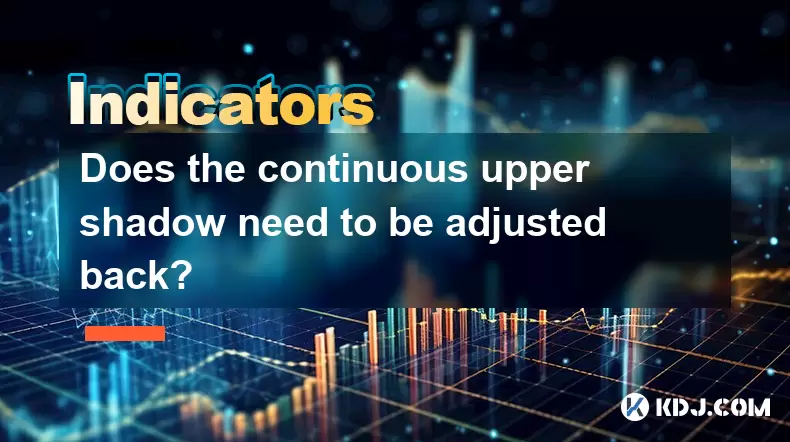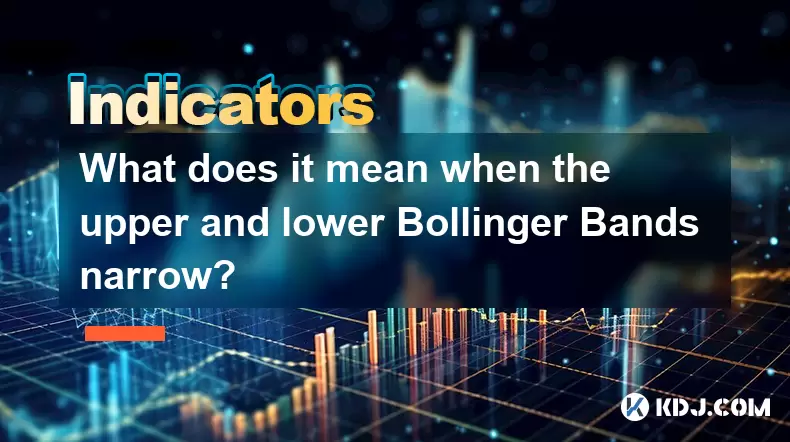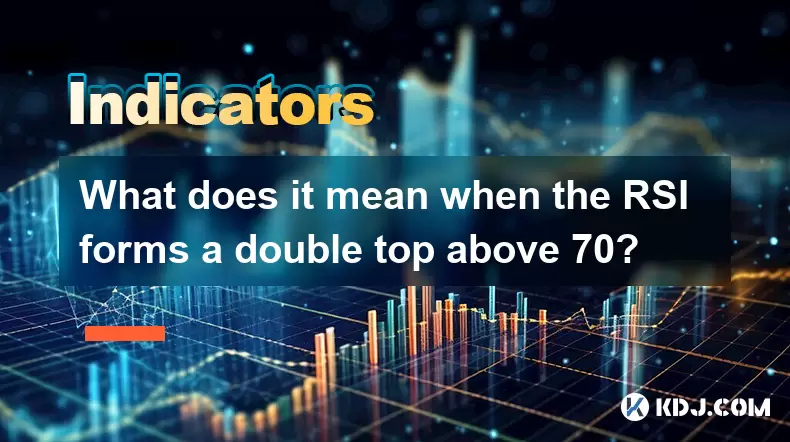-
 Bitcoin
Bitcoin $116800
0.71% -
 Ethereum
Ethereum $4211
6.94% -
 XRP
XRP $3.276
1.68% -
 Tether USDt
Tether USDt $1.000
0.02% -
 BNB
BNB $807.0
3.00% -
 Solana
Solana $180.5
3.24% -
 USDC
USDC $0.9999
0.01% -
 Dogecoin
Dogecoin $0.2406
9.02% -
 TRON
TRON $0.3357
-1.10% -
 Cardano
Cardano $0.8047
3.16% -
 Hyperliquid
Hyperliquid $43.81
7.97% -
 Chainlink
Chainlink $21.08
10.16% -
 Stellar
Stellar $0.4506
1.97% -
 Sui
Sui $3.916
4.69% -
 Bitcoin Cash
Bitcoin Cash $568.3
-1.85% -
 Hedera
Hedera $0.2628
2.48% -
 Avalanche
Avalanche $24.17
4.54% -
 Ethena USDe
Ethena USDe $1.001
0.03% -
 Litecoin
Litecoin $121.4
0.35% -
 Toncoin
Toncoin $3.408
2.28% -
 UNUS SED LEO
UNUS SED LEO $8.978
-0.08% -
 Shiba Inu
Shiba Inu $0.00001376
7.59% -
 Uniswap
Uniswap $10.86
2.94% -
 Polkadot
Polkadot $4.079
5.33% -
 Dai
Dai $1.000
0.02% -
 Pepe
Pepe $0.00001231
10.28% -
 Bitget Token
Bitget Token $4.502
0.79% -
 Cronos
Cronos $0.1576
3.63% -
 Monero
Monero $271.1
0.48% -
 Ethena
Ethena $0.7336
18.38%
Does the continuous upper shadow need to be adjusted back?
Continuous upper shadows signal potential reversals; traders should adjust back if resistance persists, using volume analysis and technical indicators for confirmation.
Jun 03, 2025 at 12:42 am

Does the Continuous Upper Shadow Need to be Adjusted Back?
In the world of cryptocurrency trading, chart patterns and candlestick formations play a crucial role in making informed trading decisions. One such pattern that traders often encounter is the continuous upper shadow. Understanding whether this pattern requires adjustment back is essential for traders looking to maximize their returns and minimize risks. Let's delve into the details of continuous upper shadows and explore the need for adjustments.
Understanding Continuous Upper Shadows
A continuous upper shadow in a candlestick chart represents a situation where the price of a cryptocurrency repeatedly tries to rise but fails to sustain the gains. This pattern is characterized by a series of candles with long upper shadows, indicating that the price reached a high but then fell back down to close near the open. This can signal that there is strong resistance at a particular price level, and sellers are pushing the price back down.
The Significance of Continuous Upper Shadows
The presence of continuous upper shadows is often interpreted as a sign of potential reversal or consolidation. When traders see this pattern, it suggests that the market is struggling to push the price higher, and there might be a need for the price to adjust back to find a new equilibrium. This adjustment can be a pullback to a support level or a consolidation phase before another attempt at breaking through the resistance.
When to Consider Adjusting Back
Traders should consider the need to adjust back when the continuous upper shadow pattern persists over multiple candlesticks. If the price continues to fail at the same resistance level, it might be an indication that the market sentiment is shifting. Here are some key indicators that suggest an adjustment back might be necessary:
- Volume Analysis: If the trading volume increases during the formation of the upper shadows, it indicates strong selling pressure at the resistance level. This can be a signal that the price needs to adjust back to a lower level.
- Technical Indicators: Tools like the Relative Strength Index (RSI) or Moving Average Convergence Divergence (MACD) can help confirm if the market is overbought and due for a correction. If these indicators show overbought conditions, it strengthens the case for an adjustment back.
- Price Action: Observing how the price reacts after each upper shadow can provide insights. If the price consistently fails to close above the resistance and falls back, it's a strong indication that an adjustment back is needed.
How to Adjust Back in Response to Continuous Upper Shadows
Adjusting back in response to a continuous upper shadow pattern involves a series of strategic steps that traders can follow to manage their positions effectively. Here's a detailed guide on how to adjust back:
- Identify the Resistance Level: Start by identifying the specific price level where the continuous upper shadows are forming. This will be your key resistance level.
- Set a Stop-Loss Order: Place a stop-loss order just above the resistance level to protect your position from further upward spikes that might not sustain.
- Wait for Confirmation: Look for a candlestick that closes below the recent lows formed by the upper shadows. This can be a confirmation that the price is indeed adjusting back.
- Enter a Short Position: Once you have confirmation, consider entering a short position to capitalize on the expected downward movement. Set your target price based on the next support level.
- Monitor the Trade: Keep an eye on the price action and be ready to adjust your stop-loss and take-profit levels as the trade progresses.
Potential Risks and Considerations
While adjusting back in response to continuous upper shadows can be a profitable strategy, it's important to be aware of the potential risks involved. Here are some considerations:
- False Breakouts: Sometimes, what appears to be a continuous upper shadow pattern might be followed by a false breakout where the price suddenly breaks through the resistance. Traders need to be cautious and use stop-loss orders to manage such risks.
- Market Volatility: Cryptocurrency markets are known for their high volatility, which can lead to rapid price changes. Traders should be prepared for sudden shifts in market sentiment that could affect their adjustment strategy.
- Overtrading: Constantly adjusting back based on every upper shadow can lead to overtrading, which can erode profits due to transaction fees and slippage. It's essential to have a clear strategy and stick to it.
FAQs
Q: Can continuous upper shadows occur in both bullish and bearish markets?
A: Yes, continuous upper shadows can occur in both bullish and bearish markets. In a bullish market, they might indicate a temporary resistance before the price continues to rise. In a bearish market, they can signal that the downward trend is pausing but might resume after a brief adjustment back.
Q: How can I distinguish between a continuous upper shadow and a regular upper shadow?
A: A continuous upper shadow is characterized by a series of candlesticks with long upper shadows over multiple periods, indicating repeated failures to break through a resistance level. A regular upper shadow, on the other hand, might occur sporadically and not necessarily indicate a persistent resistance.
Q: Are there any specific timeframes where continuous upper shadows are more reliable?
A: Continuous upper shadows can be observed across various timeframes, but they tend to be more reliable on longer timeframes such as daily or weekly charts. This is because longer timeframes provide a broader view of market sentiment and are less susceptible to short-term noise.
Q: What other patterns should I look for alongside continuous upper shadows?
A: Traders should also look for patterns like bearish engulfing or shooting star candlesticks alongside continuous upper shadows. These patterns can provide additional confirmation that the market is struggling to push the price higher and might be due for an adjustment back.
Disclaimer:info@kdj.com
The information provided is not trading advice. kdj.com does not assume any responsibility for any investments made based on the information provided in this article. Cryptocurrencies are highly volatile and it is highly recommended that you invest with caution after thorough research!
If you believe that the content used on this website infringes your copyright, please contact us immediately (info@kdj.com) and we will delete it promptly.
- AI Coin Mania: Dubai Millionaires Eye 20x Gains!
- 2025-08-09 23:10:12
- ChatGPT's Hot Takes: Meme Coins to Buy Now for a Wild 2025!
- 2025-08-09 23:10:12
- Jurassic Park Vibes in Your Pocket: The Colourful Canadian Coin Featuring a Dinosaur Eye
- 2025-08-09 23:50:12
- Altcoins on the Radar: VeChain, Ethereum, and the Shifting Crypto Landscape
- 2025-08-09 23:50:12
- Crypto Airdrops & Opportunities: What's Hot in August 2025
- 2025-08-09 22:30:12
- XRP, Cardano, and the Alluring Alternatives: A 2025 Crypto Landscape
- 2025-08-09 22:35:12
Related knowledge

What does it mean when the price is trading above the SAR indicator but the red dots are densely packed?
Aug 09,2025 at 11:49pm
Understanding the SAR Indicator and Its Visual SignalsThe SAR (Parabolic Stop and Reverse) indicator is a technical analysis tool used primarily to de...

What does it mean when the MACD histogram continues to shorten but the price reaches a new high?
Aug 09,2025 at 09:29pm
Understanding the MACD Histogram and Its ComponentsThe MACD (Moving Average Convergence Divergence) indicator is a widely used technical analysis tool...

What does it mean when the Triple Moving Average (TRIX) turns downward but the price doesn't fall?
Aug 09,2025 at 12:42pm
Understanding the Triple Moving Average (TRIX) IndicatorThe Triple Moving Average, commonly known as TRIX, is a momentum oscillator designed to filter...

What does it mean when the Williams' oscillator repeatedly hits bottoms but fails to rebound?
Aug 09,2025 at 09:28am
Understanding the Williams %R OscillatorThe Williams %R oscillator, developed by Larry Williams, is a momentum indicator used in technical analysis to...

What does it mean when the upper and lower Bollinger Bands narrow?
Aug 09,2025 at 03:00pm
Understanding Bollinger Bands in Cryptocurrency TradingBollinger Bands are a widely used technical analysis tool in the cryptocurrency market, develop...

What does it mean when the RSI forms a double top above 70?
Aug 09,2025 at 05:50pm
Understanding the RSI and Overbought ConditionsThe Relative Strength Index (RSI) is a momentum oscillator that measures the speed and change of price ...

What does it mean when the price is trading above the SAR indicator but the red dots are densely packed?
Aug 09,2025 at 11:49pm
Understanding the SAR Indicator and Its Visual SignalsThe SAR (Parabolic Stop and Reverse) indicator is a technical analysis tool used primarily to de...

What does it mean when the MACD histogram continues to shorten but the price reaches a new high?
Aug 09,2025 at 09:29pm
Understanding the MACD Histogram and Its ComponentsThe MACD (Moving Average Convergence Divergence) indicator is a widely used technical analysis tool...

What does it mean when the Triple Moving Average (TRIX) turns downward but the price doesn't fall?
Aug 09,2025 at 12:42pm
Understanding the Triple Moving Average (TRIX) IndicatorThe Triple Moving Average, commonly known as TRIX, is a momentum oscillator designed to filter...

What does it mean when the Williams' oscillator repeatedly hits bottoms but fails to rebound?
Aug 09,2025 at 09:28am
Understanding the Williams %R OscillatorThe Williams %R oscillator, developed by Larry Williams, is a momentum indicator used in technical analysis to...

What does it mean when the upper and lower Bollinger Bands narrow?
Aug 09,2025 at 03:00pm
Understanding Bollinger Bands in Cryptocurrency TradingBollinger Bands are a widely used technical analysis tool in the cryptocurrency market, develop...

What does it mean when the RSI forms a double top above 70?
Aug 09,2025 at 05:50pm
Understanding the RSI and Overbought ConditionsThe Relative Strength Index (RSI) is a momentum oscillator that measures the speed and change of price ...
See all articles

























































































